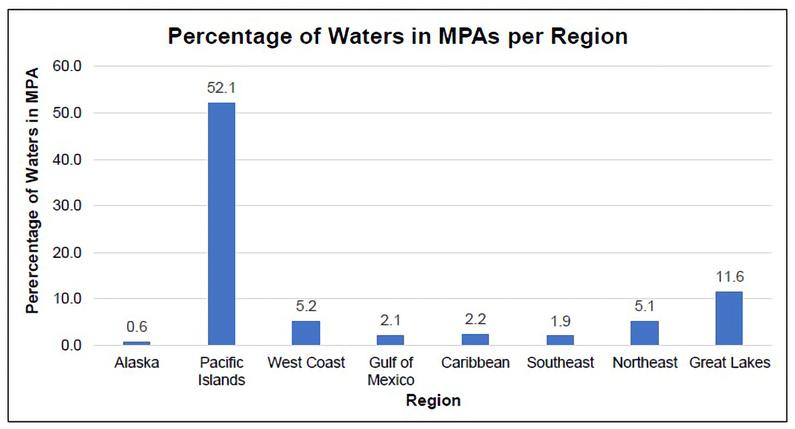
3 minute read
President Biden Plans to Conserve 30% of Land and Waters by 2030

Source: www.marine-conservation.org/us-seastates-2021.
President Biden Plans to Conserve 30% of Land and Waters by 2030
Advertisement
On Jan. 27, 2021, President Joe Biden issued an Executive Order on “Tackling the Climate Crisis at Home and Abroad,” directing his administration to conserve at least 30% of U.S. lands and waters by 2030. A National Climate Task Force will review recommendations from the Secretary of the Interior, in consultation with the Secretary of Agriculture, Secretary of Commerce and the chair of the Council on Environmental Quality. This report will outline how the United States should work with state, local, tribal and territorial governments, agricultural and forest landowners, fishermen and other key stakeholders to achieve this goal. Included in this section of the EO is for NOAA to initiate efforts to consult with fishermen and the regional fishery management councils on ways to make fisheries and protected resources more resilient to climate change.
The 30x30 initiative, as it is colloquially known, is an ambitious attempt to support conservation efforts across the country. However, the window is short for engaging stakeholders to provide information for this effort. The report is due to the Task Force within 90 days of the EO, or April 27, 2021. This allows very little opportunity for collaboration with fishermen and other stakeholders, so it is important for everyone to participate when the opportunity arises.
A key sticking point for this initiative may be the definition of conservation. Previous legislation that introduced the 30x30 idea essentially meant no-take areas. The Western Pacific Regional Fishery Management Council maintains that conservation and management go hand in hand and refers to the regulations required to rebuild, restore or maintain any resource and the marine environment (Magnuson-Stevens Act §3(5)). Regional fishery management councils have practiced conservation since the MagnusonStevens Fishery Conservation and Management Act was enacted in 1976. The fisheries and fish stocks within the U.S. exclusive economic zone (EEZ, up to 200 nautical miles seaward of state waters) are currently 100% conserved and managed. This includes target, non-target and protected species affected by those fisheries, along with their habitats.
Nearly half of the entire U.S. EEZ is in the Western Pacific Region, which means it will play a large role in whatever form the 30x30 initiative takes when finally rolled out. How conservation is defined and if it refers to 30% of the total U.S. EEZ or to each region is yet to be seen, but the WP Region appears to be ahead of the game. In terms of area, the WP Region has more than 50% designated as marine national monuments—almost 24% of the entire U.S. EEZ. According to the SeaStates 2021 report developed by the Marine Conservation Institute, these areas are considered “strongly protected” as they do not allow commercial extraction but provide for noncommercial fishing activities. Depending on which approach is taken with the 30x30 proposal, the WP Region is in a good position to demonstrate it already has some of the most protected areas in the nation.
The State of Hawai‘i and Governor Ige pledged to “effectively manage 30% of nearshore ocean waters by 2030” at the 2016 World Conservation Congress held in Hawai‘i. Ten years prior, the Micronesia Challenge (which includes the Commonwealth of the Northern Mariana Islands and Guam) set out a similar initiative to “effectively conserve at least 30% of the near-shore marine resources” by 2020 and, more recently, increased that goal to effectively manage 50% of marine resources by 2030. The idea is not new. The Council has effectively managed 100% of the almost 1.7 million nautical square miles of EEZ under its jurisdiction with management regulations such as prohibitions on bottom trawls and other destructive gears, area-based closures and gear/vessel restrictions. Whatever form the president’s 30x30 initiative takes, it should be fair and equitable to reduce any additional burden on the fisheries in the WP Region.

In terms of area, the WP Region has more than 50% designated as marine national monuments—almost 24% of the entire U.S. EEZ.










